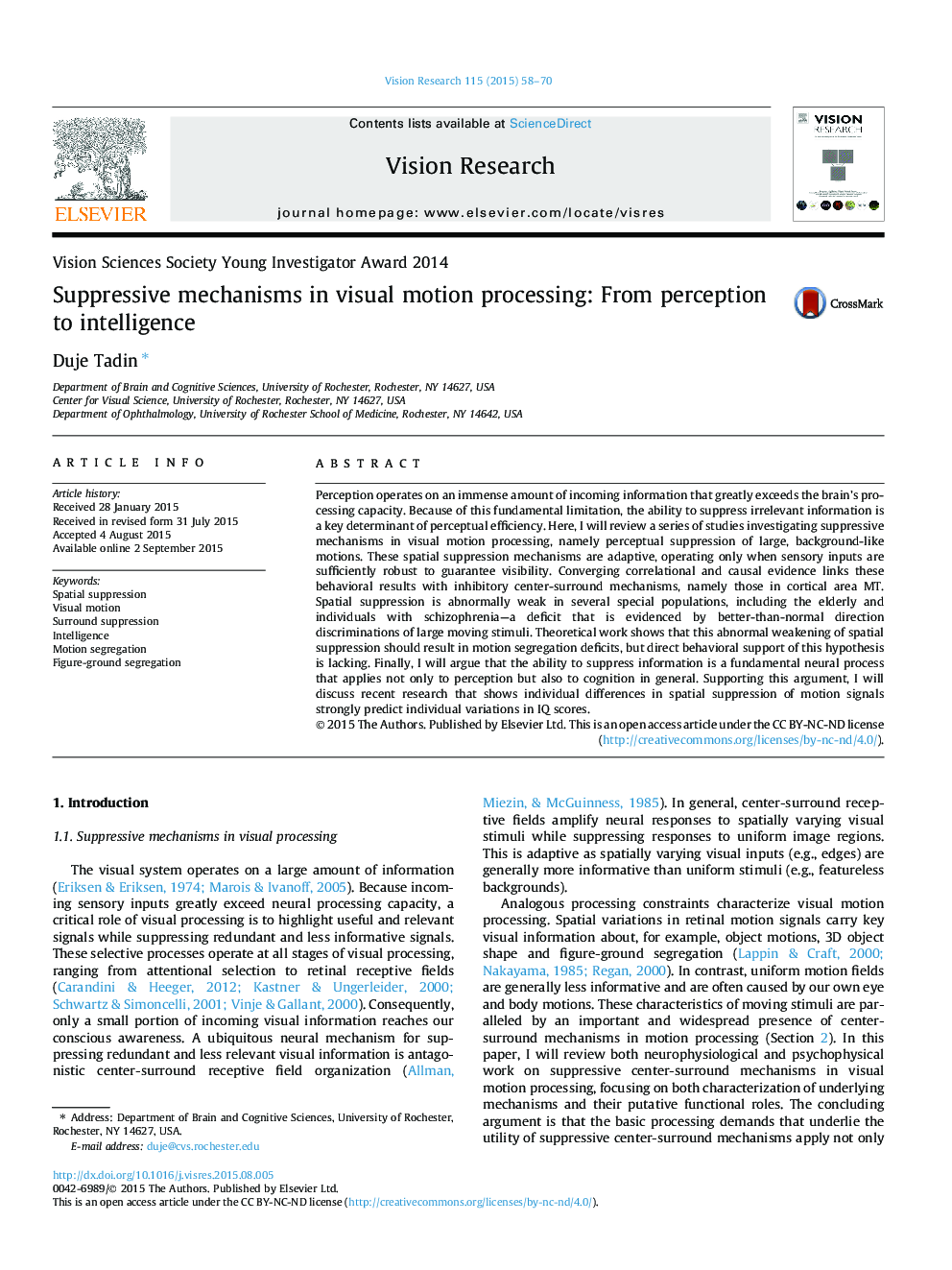| Article ID | Journal | Published Year | Pages | File Type |
|---|---|---|---|---|
| 6203128 | Vision Research | 2015 | 13 Pages |
â¢Suppressive spatial mechanisms play a key role in motion perception.â¢Spatial integration of motion adapts to visual conditions.â¢Spatial suppression mechanisms are impaired is several special populations.â¢Motion segregation is a hypothesized functional role of spatial suppression.â¢Spatial suppression strength strongly predicts individual variations in IQ.
Perception operates on an immense amount of incoming information that greatly exceeds the brain's processing capacity. Because of this fundamental limitation, the ability to suppress irrelevant information is a key determinant of perceptual efficiency. Here, I will review a series of studies investigating suppressive mechanisms in visual motion processing, namely perceptual suppression of large, background-like motions. These spatial suppression mechanisms are adaptive, operating only when sensory inputs are sufficiently robust to guarantee visibility. Converging correlational and causal evidence links these behavioral results with inhibitory center-surround mechanisms, namely those in cortical area MT. Spatial suppression is abnormally weak in several special populations, including the elderly and individuals with schizophrenia-a deficit that is evidenced by better-than-normal direction discriminations of large moving stimuli. Theoretical work shows that this abnormal weakening of spatial suppression should result in motion segregation deficits, but direct behavioral support of this hypothesis is lacking. Finally, I will argue that the ability to suppress information is a fundamental neural process that applies not only to perception but also to cognition in general. Supporting this argument, I will discuss recent research that shows individual differences in spatial suppression of motion signals strongly predict individual variations in IQ scores.
